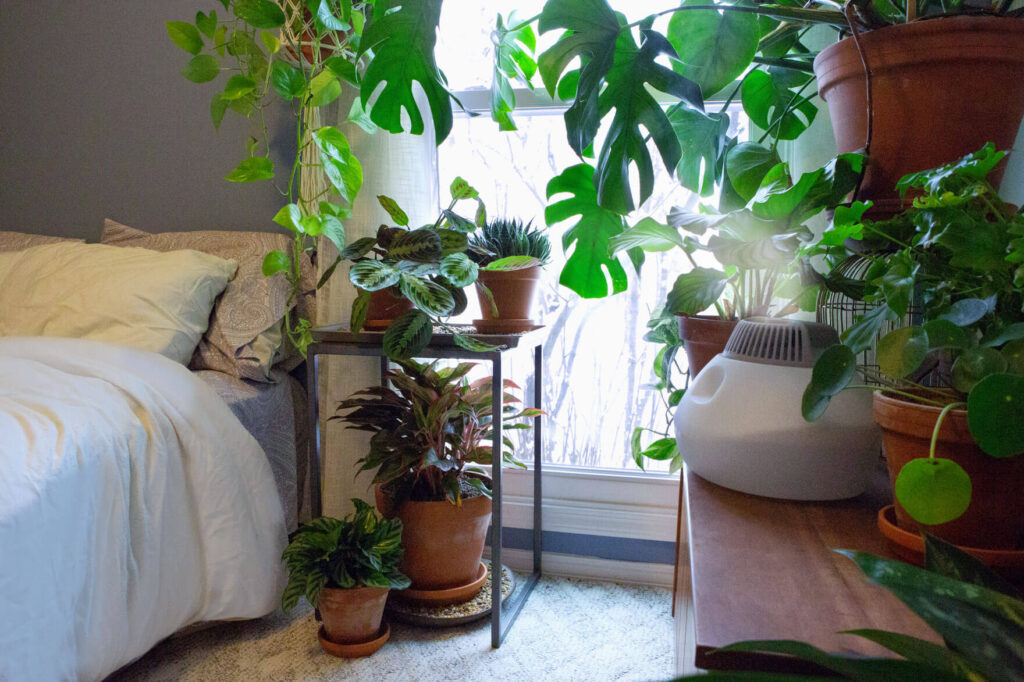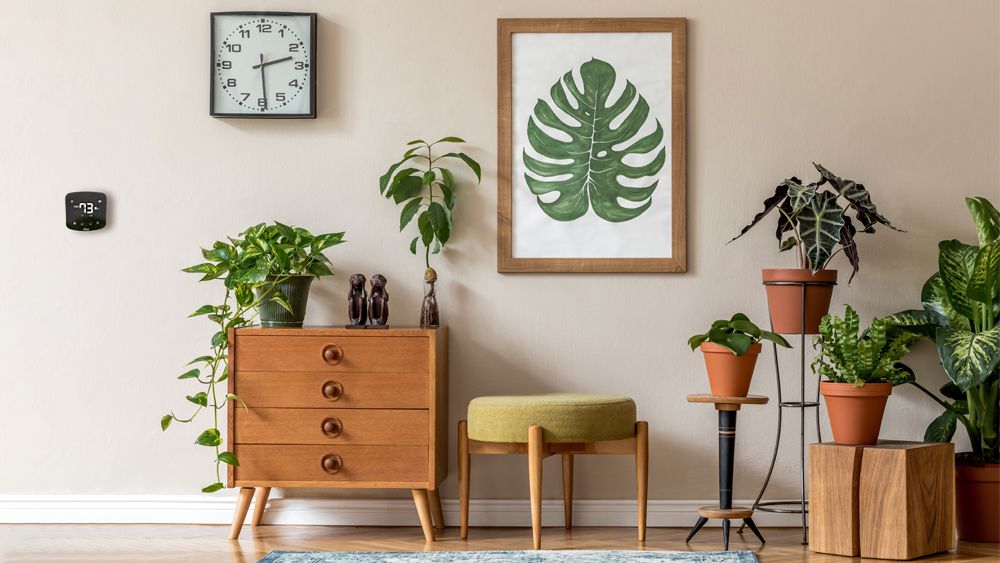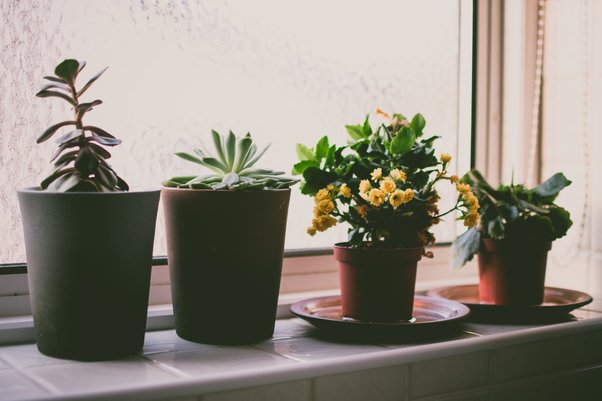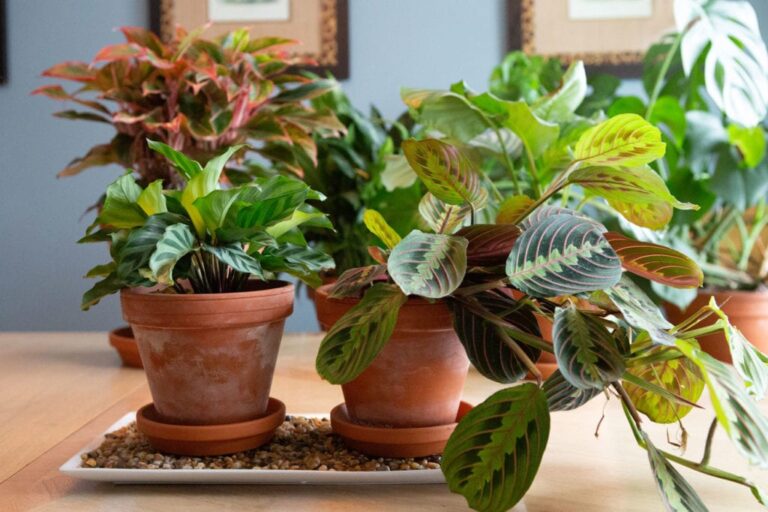Contents
Introduction: How to Maintain Humidity for Your Plants During Winter
Keeping your indoor plants happy and healthy during winter can be tricky, especially when it comes to maintaining the right humidity levels. As the cold weather rolls in, the air inside our homes tends to get much drier. This is because the heating systems we rely on to stay warm often suck the moisture out of the air, leaving your plants in an environment that’s far from their ideal.
So, why does humidity matter so much for plants? Well, many of the houseplants we love to grow, like ferns, orchids, and tropical plants, come from parts of the world where the air is naturally moist. They’re used to environments with consistent humidity levels, which help them absorb water through their leaves and keep their foliage lush and vibrant. When the air around them gets too dry, these plants can start to show signs of stress—like brown, crispy edges on their leaves, wilting, or even dropping leaves altogether.
During winter, the drop in humidity can become a real problem, especially if you don’t take steps to counteract it. Without enough moisture in the air, your plants might struggle to thrive, and you could end up with a few unhappy housemates. But don’t worry—it’s not all doom and gloom! With a few simple tricks and tools, you can easily boost the humidity around your plants and help them stay healthy through the colder months.
In this guide, we’ll walk you through everything you need to know about maintaining humidity for your plants during winter. Whether you’re a seasoned plant parent or just getting started, we’ll cover practical tips and easy-to-follow methods that will keep your indoor garden looking its best. From using humidifiers to arranging plants strategically, you’ll learn how to create the perfect environment to keep your greenery thriving all winter long.
So, let’s dive in and get your plants set up for success this winter!
Understanding Plant Humidity Needs
Before you start adjusting humidity levels for your plants, it’s important to understand what your plants actually need. Different plants have different humidity requirements, and knowing what those are can make all the difference in keeping them happy and healthy during winter.
Let’s start with the basics: humidity refers to the amount of moisture in the air. Some plants, especially those native to tropical regions, are used to high humidity levels—think of the steamy, lush environments of rainforests. Plants like ferns, calatheas, and orchids thrive in these conditions because they’re adapted to absorb moisture directly from the air. On the other hand, succulents and cacti, which come from arid regions, prefer much lower humidity and can actually suffer if the air is too moist.
So, how do you know what kind of humidity your plants need? A good rule of thumb is to look at where your plants come from. Tropical plants generally prefer humidity levels around 60-80%, while desert plants are comfortable with much lower levels, often around 30-40%. But don’t worry if you’re not sure exactly what your plant needs—most houseplants fall somewhere in between and can adapt to average indoor humidity levels as long as you keep an eye on them.
One of the key signs that your plants are struggling with low humidity is when their leaves start to turn brown and crispy at the edges. You might also notice that the leaves are drooping or curling, or that new growth is stunted. These are all signals that the air around your plant is too dry, and it’s time to take action.
Understanding these needs is the first step in creating a healthy environment for your plants. Once you know what they need, you can start exploring different ways to boost humidity, ensuring that your plants continue to thrive even as the winter chill sets in.
Methods to Increase Humidity
Now that you know how important humidity is for your plants, let’s talk about some simple and effective ways to boost the moisture levels in your home, especially during those dry winter months. The good news is, there are plenty of methods you can try, whether you’re looking for a quick fix or a more long-term solution.

One of the most popular and efficient ways to increase humidity is by using a humidifier. Humidifiers come in different types, like evaporative, ultrasonic, and steam, each with its own set of pros and cons. For example, ultrasonic humidifiers are quiet and energy-efficient, making them a favorite among plant enthusiasts. When choosing a humidifier, consider the size of the room and the specific needs of your plants. It’s an easy, hassle-free way to maintain consistent humidity levels, and your plants will definitely appreciate the extra moisture in the air.
If you’re not ready to invest in a humidifier, you can try grouping your plants together. This method works because plants naturally release moisture through a process called transpiration. When you place plants close to each other, they create a mini microenvironment where humidity levels are higher. It’s a simple trick that doesn’t require any special equipment, and it can make a noticeable difference for your plants, especially if you have several that enjoy humid conditions.
Another low-cost method is using pebble trays. This involves placing a tray filled with pebbles and water underneath your plant pots. As the water evaporates, it adds moisture to the air around the plants. To make a pebble tray, all you need are some pebbles, a shallow tray, and water—easy, right? Just make sure the bottom of your plant pots isn’t sitting directly in the water to avoid root rot.
Misting your plants is another option that many plant owners use. This involves spraying a fine mist of water over the leaves to temporarily raise the humidity. While misting can provide a quick boost, it’s important to note that the effects are short-lived, and you may need to mist several times a day for it to be effective. Plus, over-misting can lead to problems like mold or mildew, so it’s best to use this method sparingly or as a supplement to other humidity-boosting strategies.
For a more decorative approach, consider adding indoor water features like small fountains or water bowls. These not only increase humidity but also add a soothing, natural element to your home. The constant evaporation from the water surface helps keep the air moist, making it a great option if you’re looking to add some ambiance while helping your plants.
By using these methods, you can easily create a more humid environment that will help your plants thrive during the winter. Whether you opt for a high-tech humidifier or a simple pebble tray, the key is consistency—keeping the humidity at a level that makes your plants feel right at home.
Managing Indoor Climate
Boosting humidity is a great start, but to really keep your plants thriving during winter, it’s essential to manage the overall indoor climate, which includes both temperature and ventilation. These factors are closely linked to humidity and play a big role in your plants’ health.

Let’s talk about temperature first. During winter, we rely on heaters to stay warm, but these heaters can dry out the air, making it harder for your plants to get the humidity they need. Plus, sudden changes in temperature, like drafts from doors or windows, can stress your plants and affect their ability to absorb moisture. Ideally, you want to keep your indoor temperature stable—most houseplants do well in a range between 65°F and 75°F (18°C to 24°C). Avoid placing plants too close to heat sources like radiators or vents, as the direct heat can dry them out quickly.
Another thing to consider is the relationship between temperature and humidity. Warmer air can hold more moisture, which is why your indoor humidity levels can drop so much when you turn up the heat. To keep things balanced, you might need to adjust your heating slightly or run a humidifier more often to compensate for the dryness.
Next up is ventilation. Good air circulation is important for plants, as it helps prevent issues like mold or mildew, which can occur if the air is too stagnant. However, too much ventilation—like constantly running fans or frequently opening windows—can reduce humidity levels and dry out your plants. The key is to find a balance that keeps the air moving without stripping away all the moisture.
If you’re using a humidifier, you’ll need to think about how it interacts with your ventilation system. For instance, if you have an HVAC system running, it might be pulling moisture out of the air, which can counteract the benefits of your humidifier. In this case, you might want to use room-specific humidifiers or place plants in areas where they’re less exposed to airflow from vents.
Managing your indoor climate isn’t just about one factor—it’s about creating an overall environment where your plants can thrive. By keeping an eye on both temperature and ventilation, along with humidity, you can ensure that your indoor garden stays lush and healthy, even when it’s cold and dry outside.
Additional Tips and Tricks
Once you’ve got the basics of humidity, temperature, and ventilation covered, there are a few extra tips and tricks that can help you fine-tune the environment for your plants during winter. These are small but effective strategies that can make a big difference in keeping your indoor garden vibrant and healthy.

First off, let’s talk about monitoring humidity levels. One of the best ways to do this is by using a hygrometer. A hygrometer is a simple device that measures the moisture in the air, and it’s an invaluable tool if you want to keep an eye on your home’s humidity. You can find digital hygrometers that are easy to read and often include temperature readings as well. Place the hygrometer near your plants to get an accurate reading of the humidity in their immediate environment. Ideally, you want to check it regularly, especially as the weather changes, so you can adjust your humidity-boosting methods as needed.
When it comes to specific plants, it’s important to recognize that different species have different needs. Let’s look at caring for high humidity plants. Plants like ferns, calatheas, and orchids really thrive in humid environments, so they’ll need more attention during winter. For these plants, you might need to combine several methods—like using a humidifier, grouping plants together, and misting occasionally—to keep the humidity levels high enough.
On the other hand, you’ll also want to adjust care for low humidity plants like succulents and cacti. These plants are naturally adapted to dry conditions and can actually suffer if the air is too moist. For them, it’s important to keep an eye on how much you’re watering, as too much humidity combined with frequent watering can lead to root rot. During winter, you might need to scale back on any humidity-boosting methods for these types of plants.
Another key aspect is seasonal adjustments. As winter comes to an end and spring approaches, the conditions inside your home will start to change. The air might naturally become more humid as you turn off the heating and open windows more often. It’s a good idea to start scaling back on some of your humidity-boosting techniques in late winter to prepare for this transition. This gradual adjustment helps your plants adapt smoothly to the changing environment, ensuring they don’t get shocked by sudden changes in humidity or temperature.
By incorporating these additional tips and tricks, you can create a more tailored approach to plant care during winter. Whether it’s keeping a close eye on humidity levels with a hygrometer, fine-tuning your care routines for specific plants, or making gradual adjustments as the seasons change, these small steps can have a big impact on the health and happiness of your indoor garden.
Conclusion
As winter sets in, maintaining the right humidity for your plants can seem like a challenge, but with the right knowledge and a few practical strategies, it’s definitely manageable. Keeping your indoor garden lush and vibrant during the colder months is all about understanding your plants’ needs and creating an environment where they can thrive, even when the air gets dry.
To recap, we’ve covered why humidity is so important for plants, especially those that come from tropical climates. When the air is too dry, your plants can struggle, showing signs like brown leaf edges, wilting, or even stunted growth. But by using methods like humidifiers, grouping plants together, and setting up pebble trays, you can easily boost the moisture levels in your home. We also talked about managing the overall indoor climate by balancing temperature and ventilation to keep your plants comfortable.
Monitoring humidity levels with a hygrometer, tailoring your care to specific plant types, and making seasonal adjustments are all part of fine-tuning your plant care routine. These additional tips help you stay on top of the changes that come with winter, ensuring that your plants get exactly what they need to stay healthy.
Remember, every plant is different, and finding the right balance may take a little trial and error. But with some attention and care, your plants can not only survive but thrive during winter. Regular checks and small adjustments can make all the difference in keeping your indoor garden looking its best.
As you continue on your plant care journey, don’t hesitate to explore more resources to deepen your understanding. There are plenty of books, websites, and online communities where you can find more detailed information and connect with other plant enthusiasts. The more you learn, the better equipped you’ll be to create a thriving indoor environment for your plants all year round.
So, take what you’ve learned, and start applying these tips to your own plant care routine. Your plants will thank you with lush leaves, vibrant growth, and a healthy, green presence in your home, no matter how cold and dry it gets outside.



